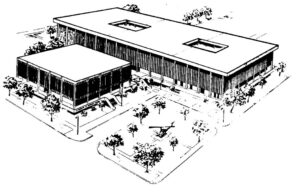CORRESPONDENCE COURSE OF
THE U.S. ARMY MEDICAL DEPARTMENT CENTER AND SCHOOL
SUBCOURSE MD0842 EDITION 200
INTRODUCTION

The focus of this subcourse is the identification forms and life cycles of parasites
which infect humans.
Organisms which will be discussed include parasitic members of Phylum Protozoo, Platyhelminthes, Aschelminthes, and Acanthocephahelminthes. You will be provided with descriptions of the general characteristics of the phylum and detailed illustrations of the cycle forms of significant members of the phylum.
This subcourse is the second of two subcourses which discuss parasitology. In Parasitology I, an overview of parasitology and information for the collection, preservation, and processing of clinical specimens were presented. The material provided in this subcourse will build on that information. It contains information that will help you gain knowledge and skill in the identification of human parasites. It does not attempt to cover parasitology in depth but is only intended to guide you toward becoming competent in the field. For your further learning a bibliography of supplemental sources of parasitology information is included in Appendix B.
Subcourse Components:
The subcourse instructional material consists of four lessons and three. appendixes as follows:
Lesson 1, Phylum Protozoo: Rhizopoda and Zoomastigophora.
Lesson 2, Phylum Protozoo: Ciliata, Piroplasmasida, and Sporozoa.
Lesson 3, Phylum Platyhelminthes.
Lesson 4, Phylum Aschelminthes; Phylum Acanthocephahelminthes; Arthropods and Vectors.
Appendix A, Clinical Manifestations and Treatment of the Common Parasitic Diseases.
Appendix B, References
Appendix C, Medical Parasitology
–Complete the subcourse lesson by lesson. After completing each lesson, work
the exercises at the end of the lesson
–After completing each set of lesson exercises, compare your answers with those on the solution sheet that follows the exercises. If you have answered an exercise incorrectly, check the reference cited after the answer on the solution sheet to determine why your response was not the correct one.
———————-
Download Here
Parasitology II
Length: 312 Pages
Estimated Hours to Complete: 12
Format: PDF file
Size: 23 MB
—————————-
Anyone may take this course. However, to receive credit hours, you must be officially enrolled and complete an examination furnished by the Nonresident Instruction Branch at Fort Sam Houston, Texas. Enrollment is normally limited to Department of Defense personnel. Others may apply for enrollment, but acceptance is not guaranteed.
—————————-
TABLE OF CONTENTS
INTRODUCTION
1 PHYLUM PROTOZOO: RHIZOPODA AND ZOOMASTIGOPHORA
Section I. Overview of Protozoo
Section II. Class Rhizopoda
Section III. Class Zoomastigophora
Exercises
2 PHYLUM PROTOZOO: CILIATA, PIROPLASMASIDA, AND SPOROZOA
Section I. Class Ciliata
Section II. Class Piroplasmasida
Section III. Class Sporozoa
Exercises
3 PHYLUM PLATYHELMINTHES
Section I. Overview of Platyhelminthes
Section II. Class Trematoda
Section III. Class Cestoda
Exercises
4 PHYLUM ASCHELMINTHES: PHYLUM ACANTHOCEPHAHELMINTHES: ARTHROPODS AND VECTORS
Section I. Phylum Aschelminthes
Section II. Phylum Acanthocephahelminthes
Section III. Arthropods and Vectors
Exercises
APPENDIX A: Clinical Manifestations and Treatment of the Common Parasitic Diseases
APPENDIX B: References
APPENDIX C: Medical Parasitology
—————————-
Sample
LESSON 1 Phylum Protozoo: Rhizopoda and Zoomastigophora.
LESSON ASSIGNMENT Paragraphs 1-1 through 1-11.
LESSON OBJECTIVES After completing this lesson, you should be able to:
1-1. Identify the general characteristics of
protozoans.
1-2. Identify the organism characteristics of parasitic
members of Class Rhizopoda.
1-3. Select a statement that best describes the life
cycle of a member of Class Rhizopoda.
1-4. Identify the organism characteristics of parasitic
members of Class Zoomastigophora.
1-5. Select a statement that best describes the life
cycle of a member of Class Zoomastigophora.
1-6. Identify the specimen of choice for recovery of
specific protozoan organisms.
1-7. Identify the special technique required for
recovery of specific protozoan organisms.
SUGGESTION After completing the assignment, complete the
exercises of this lesson. These exercises will help you
to achieve the lesson objectives
—————————-
Download Here
Parasitology II
